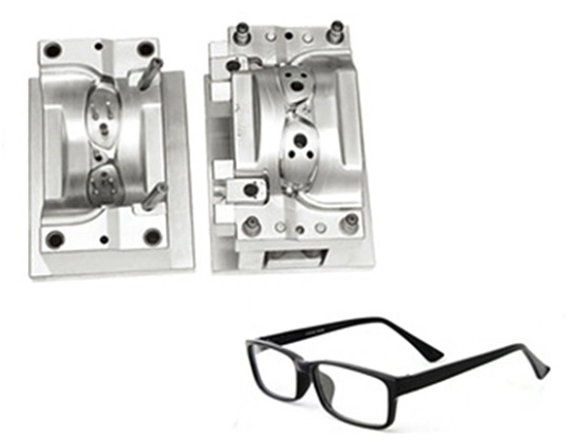
Injection molded glasses can be very sturdy, depending on the materials used and the quality of the manufacturing process. Here’s an overview of why injection molded glasses can be durable and reliable:
Factors Contributing to the Sturdiness of Injection Molded Glasses
1. Material Choice
- High-Quality Plastics: Injection molded glasses frames are typically made from high-quality thermoplastics such as polycarbonate (PC), acetate, nylon, or TR90 (a type of thermoplastic).
- Durability: These materials are chosen for their strength, flexibility, and impact resistance. For instance, polycarbonate is known for its robustness and is often used in safety glasses and sports eyewear.
- Lightweight: Despite being strong, these materials are lightweight, which enhances comfort without compromising sturdiness.
2. Manufacturing Precision
- Consistent Quality: Injection molding allows for precise control over the manufacturing process, resulting in consistent and high-quality frames.
- Detailed Designs: The process can produce complex shapes and detailed designs, ensuring that the frames are both functional and aesthetically pleasing.
[elementor-template id=”4330″]
3. Design and Engineering
- Reinforcement: Glasses can be designed with reinforced areas that are more prone to stress, such as the bridge and hinges.
- Flexibility: Materials like TR90 are known for their flexibility, which allows the frames to bend without breaking and return to their original shape, increasing their lifespan.
4. Impact Resistance
- Shock Absorption: High-quality thermoplastics used in injection molding can absorb shocks and impacts, making the glasses more resistant to breaking or cracking.
- Scratch Resistance: Some materials, like polycarbonate, are also scratch-resistant, which helps maintain the appearance and clarity of the lenses and frames over time.
Comparison to Other Manufacturing Methods
1. Injection Molding vs. Traditional Methods
- Consistency: Injection molding provides more consistent results compared to hand-made or cut-and-assemble methods.
- Speed: The process is faster, allowing for high-volume production while maintaining quality.
2. Injection Molding vs. 3D Printing
- Strength: Injection molded parts are generally stronger and more durable than those produced by 3D printing, which can sometimes result in weaker layer bonds.
- Surface Finish: Injection molding usually results in a smoother and more polished surface finish, which can enhance the aesthetic appeal and comfort of the glasses.
[elementor-template id=”4331″]
Conclusion
Injection molded glasses can be very sturdy, thanks to the use of high-quality materials, precise manufacturing processes, and thoughtful design. The choice of durable thermoplastics like polycarbonate and TR90 ensures that the frames are strong, impact-resistant, and flexible, making them suitable for everyday wear and various activities. The injection molding process itself contributes to the consistency and quality of the glasses, providing a reliable and robust product.
Related Conten: Mold Design
 DTG Mould Trade Process |
|
| Quote: | According to sample, drawing and specific requirement. |
|---|---|
| Discussion | Mold material, cavity number, price, runner, payment, etc. |
| S/C Signature | Approval for all the items. |
| Advance | Pay 50% by T/T |
| Product Design Checking | We check the product design. If some position is not perfect, or can not be done on the mould, we will send customer the report. |
| Mold Processing | Send report to customer once each week |
| Mold Testing | Send trial samples and try-out report to customer for confirmation |
| Mold Modification | According to customer’s feedback. |
| Balance Settlement | 50% by T/T after the customer approved the trial sample and mould quality. |
| Delivery | Delivery by sea or air. The forwarder can be designated by your side. |
 |
|

